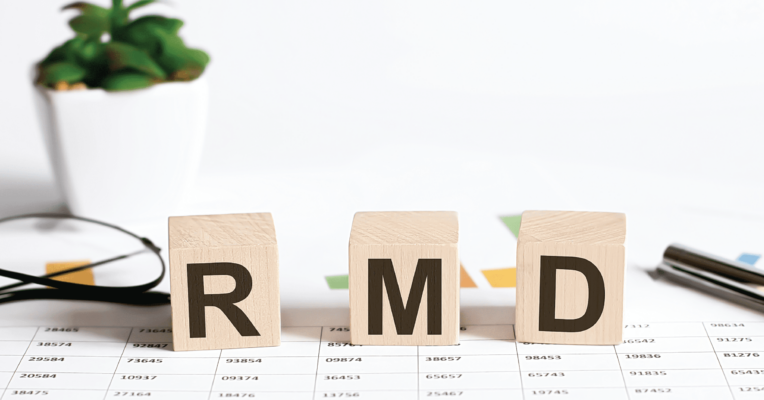How the SECURE Act 2.0 Impacts Employer-Sponsored Plans
The SECURE Act 2.0 was signed into law on December 29th, 2022. While it includes more than ninety provisions, we’ve highlighted the key changes that will impact employers who sponsor retirement plans. For simplicities sake, we’ve created a separate article to address how the SECURE Act 2.0 impacts individual retirees’ financial plans.
Allowing for ESAs (Emergency Savings Accounts)
This feature permits a plan sponsor to offer short-term emergency savings accounts (ESAs) as part of a defined contribution plan. This can help offset one of the primary concerns that many have for saving in a qualified retirement plan – that they won’t be able to access the money. It can also be a catalyst to change individuals’ behavior from using their retirement plan balance as the first place they would turn in a financial pinch. This behavior change could have a significant effect in helping those individuals continue to accumulate retirement capital.
ESAs must be funded post-tax with Roth contributions and participants can be automatically enrolled at up to 3% of compensation. Contributions to ESAs are capped at $2,500 (indexed for inflation) or a lower amount determined by the plan sponsor, and there cannot be a minimum contribution or balance requirement. Participating employees must be allowed at least one withdrawal per month and the first four withdrawals in a year are not subject to fees.
Lastly, ESAs may be invested in cash, interest bearing deposit accounts, and principal preservation accounts. For those utilizing automatic enrollment, there is a fiduciary Safe Harbor that provides for the preemption of state anti-garnishment laws.
Self-Certification for Hardship Withdrawals
Plan administrators are allowed to rely on an employee’s self-verification that they’ve experienced an event qualified under Safe Harbor as a hardship that permits a withdrawal from a 401(k) or 403(b) plan. This will significantly reduce the administrative burden and potential liability to employers. The administrator may also rely on the employee’s self-verification that the amount withdrawn is not in excess of the amount required to provide significant aid and that they don’t have alternative means to satisfy the financial need.
A similar rule is applicable to 457(b) plans for unforeseeable emergency distributions.
Employer 401(k) Match Contributions Allowed on Student Loan Payments
Contributions made on behalf of employees for “qualified student loan payments” are treated as matching contributions, so long as certain requirements are met. A plan may treat a qualified student loan payment as an elective deferral or an elective contribution (as applicable) for purposes of the matching contribution under a basic Safe Harbor 401(k), Automatic Enrollment Safe Harbor 401(k), or a Section 401(m) Safe Harbor plan. Employers are permitted to apply the ADP non-discrimination test separately to employees who receive matching contributions on account of qualified student loan payments. Employers may rely on employee certification of payment.
With this provision, recent college grads will no longer be faced with the difficult decision of whether to accelerate payment of their student loans or save for retirement. With many individuals accumulating high student debt balances while earning an education, this will allow employers to help said individuals get started with retirement savings and take advantage of the significant power of compound interest while they continue to pay down their student loans.
This applies to 401(k), 403(b), SIMPLE IRAs, and 457(b) plans.
Automatic Enrollment for New Plans
Automatic enrollment (which can also be thought of as changing a plan from a default opt-in plan to an opt-out plan) has helped many individuals begin to save for retirement since it first becoming available as a plan option. Newly formed 401(k) and 403(b) plans are now required to utilize the Eligible Automatic Contribution Arrangement (EACA), which includes an automatic enrollment that defaults between 3% and 10% with a 90-day unwind. Additionally, plans must incorporate an Automatic Escalation feature on 1% a year up to a maximum of at least 10%, with a cap at 15%.
This is an automatic and mandatory provision for new plans, with the following exceptions:
- Government and church retirement plans
- Small employers with ten or fewer employees
- SIMPLE plans
- New employers who have been in business no more than three years
- Plans that already existed prior to the implementation of this provision
Improved Saver’s Credit
This provision is a modification of the existing Saver’s Credit, making it refundable and a direct government matching contribution to the taxpayer’s IRA or eligible retirement plan. This new version is both an enhancement and simplification of the existing provision as establishes one credit percentage (with no tiers) of 50% for all savers below the AGI threshold of $41,000 for joint filers, at which point the credit phases out. The credit will be taxable upon distribution as it’s treated like a pre-tax contribution to the recipient’s plan or IRA.
This is significant because lower income individuals often have the toughest time shouldering the burden of saving for retirement. This provision opens the door for them to start by offsetting their contributions with meaningful tax credits.
Update to the Rule for Tracking Part-Time Employees
The initial SECURE Act established that 401(k) plans must allow part-time employees to contribute to their retirement plan if they worked at least 500 hours per year for at least three consecutive years and was at least 21 years old by the end of the three year period. The revised SECURE Act 2.0 has adjusted the consecutive employment requirement to only two years and it also disregards any service performed prior to 2023.
Companies will want to be diligent in setting up or making adjustments to the tracking mechanism that would be the primary system to flag when this would apply to individual, part-time employees.
Tax Credits for Companies Starting Plans and Small Companies That Make Contributions on Behalf of Their Employees
Employers with less than 50 employees can now receive credit for up to 100% or $5,000 of annual plan administrative fees for the plan’s first three years. The provision also allows for an additional credit up to $1,000 per employee for five years that equals the applicable percentage of eligible employer contributions to an eligible employer plan.
This could be incredibly beneficial to small companies that have wanted to start plans, but did not want to incur the administrative expenses. Under this provision, it is a very real possibility that a company could be fully reimbursed for the amounts they spend on a plan and up to $1,000 per employee for any contributions they make to an employee’s account.
Please note there is an exception for employees who earn over $100,000 in a given year and these credits don’t apply to defined benefit plans.
First Year Solo 401(k) Deferrals
Effective 2023, Solo 401(k)s are no longer required to be initially set up and funded until April 15th of the following year. For example, a Solo 401(k) looking to contribute for the 2023 tax year can establish in March 2024 and fund employee contributions up until April 15th. This gives individuals (and their spouses) more time and flexibility to establish and fund a solo 401(k) once they have had a chance to more fully assess their tax situation.
Creation of SEP and SIMPLE Roth IRA Accounts
These accounts can be created as of 2023 providing the potential to incorporate the tax benefits of Roth contributions for these accounts
Starter 401(k) Deferral-Only Arrangements
There are two new plan design options available to employers who do not sponsor a retirement plan – Starter 401(k) Deferral-Only Arrangement and Safe Harbor 403(b) Plan. These plans require all employees be enrolled with a minimum deferral rate of 3% and a maximum of 15% of compensation. Annual contribution limits mirror the year’s IRA limits and allow for catch-up contributions. At organizations that may still be hesitant to offer full-blown qualified retirement plans, establishing a Starter plan will allow their employees to get started with tax-advantaged retirement saving while minimizing any burden or liability for the organization.
The Bottom Line: As is the case with most new legislation, interpretation and best practices develop quickly. We encourage any and all to continue to stay close to your favorite news sources as developments around this new set of laws continue to evolve and develop.





